The Mizuno JPX919 irons were the handiwork of designer Chris Voshall and in an exclusive interview I invited him to give us the inside track on the new range.
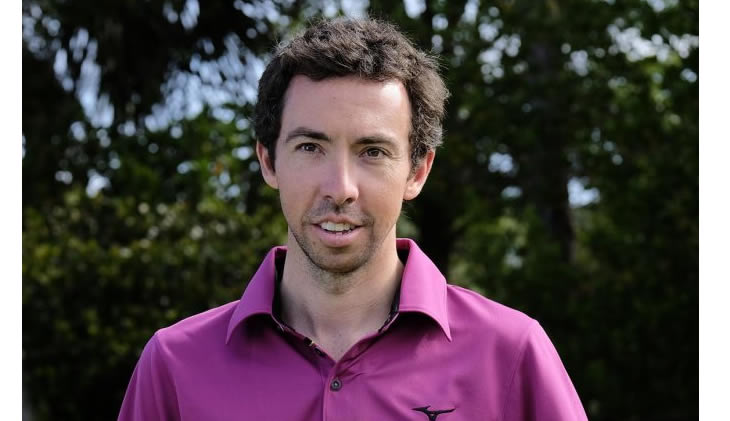
Welcome to the Golfalot Tour Truck Chris.
Hey, thanks for having me.
So tell us what was the main aim behind the JPX919 irons?
The 900 series that we launched a couple of years ago did a lot of things, but I guess it really changed the focus of Mizuno from being viewed as just a "player's company" to being viewed as a company that makes clubs for everybody, so we did a lot of good things right with the 900 line. So with the 919 line it was how can we make all those things better.
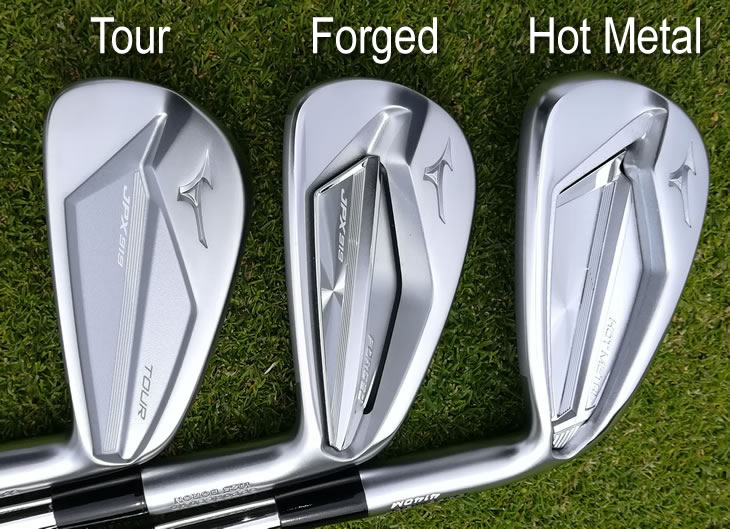
The Hot Metal was a golf club that reached a whole other level of people that we typically don't speak to, and working out how to improve on a club that was already great. Then you look at what the JPX900 Tour did in terms of winning two US Opens and US PGA and getting them into the hands of young aggressive players out on tour, we really had our hands full trying to better those products.
I understand that the JPX900 Hot Metal is probably the best selling individual model in Mizuno's history so how have you been able to improve on that, because when I tried the new model it seemed a little bit faster but generally it was quite similar in a lot of respects as well?
Yes, did a lot of things right with the previous Hot Metal. We introduced the new Chromoly material, which is really a special material because it allows you to get a super high COR really and fast ball speeds, but at the same time have a golf club which is Custom Fittable and bendable to your specs.
So we wanted to make sure we kept going with that, but we saw a few things that we could potentially improve with the new hot metal. We wanted it to launch a little bit higher, to be a little bit more forgiving and see if we could get a little bit more ball speed out of it. Now that we've got more experience with the chromoly material we did expand the COR area so you get the faster ball speeds across more of the face, we increase the initial COR so the actual ball speed coming off is quicker everywhere and then we increase the moment of inertia so that it's gonna be more forgiving regardless of where you hit it.
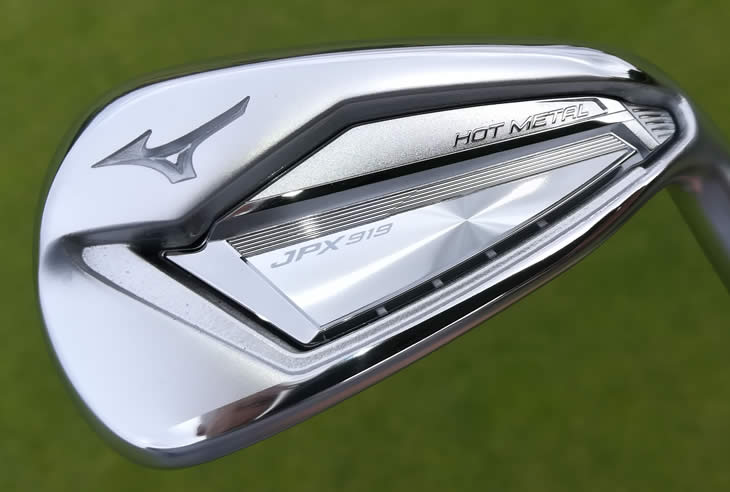
We did this by using what we call our seamless cup face design, which gives us the geometry of a cup face so you get high ball speeds across the face but it's all in a one-piece design. We did that whilst still pulling the center of gravity back and deeper to lower the sweet spot, to make sure it launches high and just provide a golf club that is playable for almost any level of golfer.
What I've seen throughout all the irons is that you've changed the the back of the iron, where you've taken some weight out of the heel area. Is that the same for all three models?
It is, and that's somewhere that we really just took a step back to look at iron design in general, in terms of where weight is best used and worst used.
It's a simple thing to say and people don't really think about it, but just the hosel itself is naturally a lot of heel weight and a lot of weight on that far side of the golf club. So rather than focus more weight in the heel on the back of the club, we wanted to see how much weight we could strip out while maintaining durability there, so we could reallocate that weight to a better location.
So what you can see on all three clubs is that the actual cavity itself extends far into the heel to remove that excess weight and move it out towards the toe.
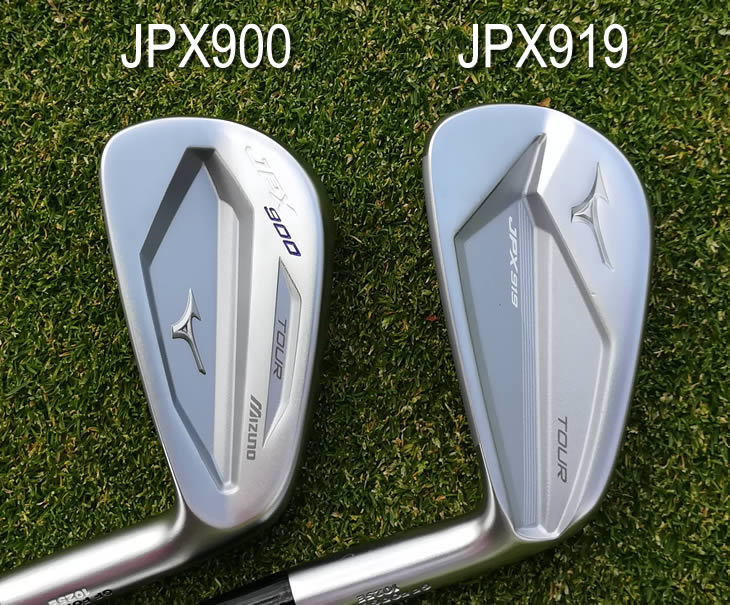
The toe weight will increase the overall moment of inertia, but also because the toe is the thickest part of the golf club, it's going to help bring the center of gravity back to help the clubs launch more easily.
Does this also help to move the centre of gravity across the face a little bit more than in the past as well?
That's exactly right. One of the big things on golf club design in general is that for better players is that the sweet spot typically lives closer to the heel on the face. But by focusing so much mass by pulling it out of the heel and putting it out onto the toe, we were actually able to move the sweet spot almost exactly to the centre of the face. This is something that you would assume a golf club has but for the most part golf clubs do not have that, and our new stability frame really pulls that sweet spot right towards the centre.
Are you able to say how much in millimetres you've been able to move it across?
It varies between models. On the Tour we were able to move it about 1.2 mm, on the Forged about 1.8mm, and the Hot Metal was close to 2mm. Those sound like small numbers, but they are drastic movements when you're talking about moving a center of gravity on a golf head that's only seventy millimeters to begin with.
You've got the JPX919 Forged which I think's a very good iron indeed. One of the things I saw compared to the JPX900 was that the leading edge doesn't have as much of a grind on it, and neither does the trailing edge either. What was the decision behind that?
That's a good observation, you're right. The 900 Forged, as well as the 850 Forged, had what we call our triple cut sole on the bottom. The reason this one doesn't is because it actually has a new technology built into it.
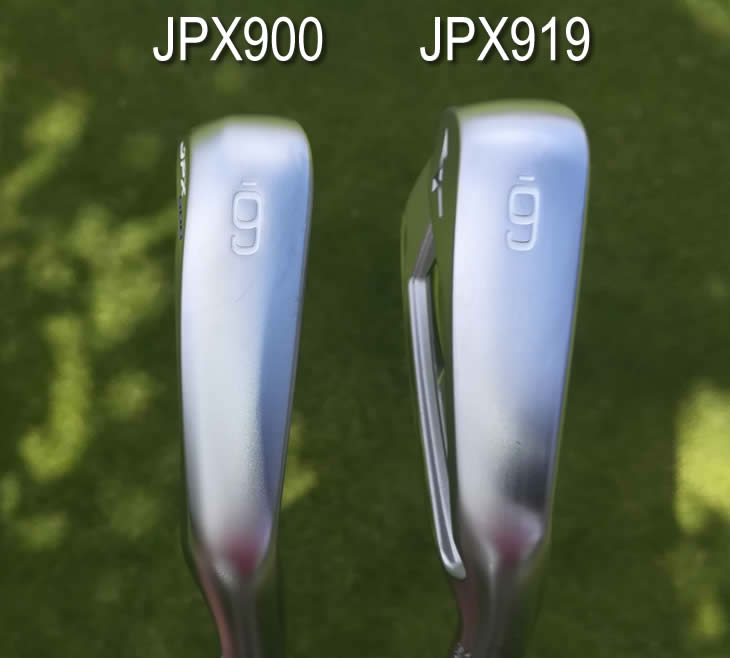
On the previous iterations we would we would mill out weight from the cavity side, whereas on this one we actually went in from the sole side, using an end mill cutter we went in from the sole to thin out the face. This helps to save you weight and increase the moment of inertia and the COR.
It can also bring the centre of gravity back, but as a result of that we had to do go back and actually fill in that cut through the sole so there's actually a small lid which covers up the cut so that it's not visible from the bottom of the club.
So the reason that we don't have the grind on it is because that lid exists there. Ultimately, we also want to allow the same playability for the club to enter and exit the turf the same way. What we did is we actually increased the amount of camber on the sole so it's actually a little bit more rounded from front to back, and that's going to give you a similar level of playability as taking a flatter sole and grinding it out.
When you refer to a 'lid' is this something which is welded on or is it part of the forging design?
It's a very precise welding. I believe the actual lid itself is 5mm by 52mm, so essentially the width of the scoreline, and it's about 1mm thick. It's welded over and then just basically polished off. What that does is it gives you a clean look at address and from behind, but at the same time you have that cut that now extends all the way to within one millimeter of the sole. That means when you hit the ball low on the face or out of the toe you're going to get a huge rebound area out of it.
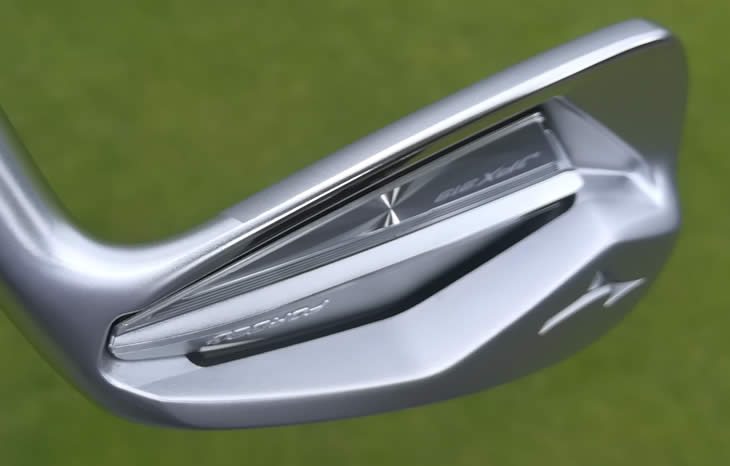
So it's almost like a cavity, or slot, behind the face then?
It is. Slots isn't a term that Mizuno uses very often, but it's our execution of a slot. Rather than put a big old piece of plastic in it and point out all of the weight taken away, we want to do it in a more sophisticated way where we took that weight out. Essentially there is a slot, it's a cavity behind the face, but we wanted to make it a lot cleaner and a lot more a lot more "Mizuno".
Is that in the Hot Metal version as well or is it just in the Forged?
That's just in the Forged because we were starting with a one-piece forging where we went in and did what we call the back milled face. On the Hot Metal, because it is a Chromoly construction when we were creating the mold for that we were able to utilise what we call a Slide Core Mould.

It's a very complex mold where, when you're injecting the Chromoly material into the wax, there's sliding pieces that you pull out almost like a little jigsaw puzzle. What that does is it allows you to get extreme geometry and extreme constructions and undercuts throughout the throughout the club all in one piece, without having to go back and mill it. So you actually have a very similar sole thickness from the leading edge, 360 degrees around the face, so essentially it is like a cup face design but all in one seamless construction.
Going back to the Forged model, is the rest of it forged or is that just on the face?
No it's the whole head, and that's the thing that bothers us a lot in the industry. "Forging" is being thrown around all over the place. You'll see forgings where just the face is forged and the back is not, and you'll see forgings where the back is forged and the face is not. Ours is a completely forged club. We start with a 1025 Boron Steel material which is similar to what we've used on some of the MP clubs and on our wedges. It's a one-piece drop of forging, and then we go back and mill it, and the only thing that's not forged on it is that one little cap that represents about 0.05% of the overall mass of the club.
So when you're forging it, is there actually a gap that you're putting this cap over?
No, when we forge it there is no gap there, it's essentially a muscle back, but that's why we have to go back with the milling because with forging the tool has to enter and exit the the golf club cleanly. You have draft angle requirements and it's impossible to forge an undercut, so what we have to do is create that undercut using post processing and that's where that end mill cut comes into play. So it allows us to get similar geometry and performance that you would in a cast golf club but still have the feel and performance of a forged club.
So it's the milling that's going in there and creating the cut, and then does that go through the sole with the cap on top of it?
It goes through the sole and out of the cavity so as to keep consistent face thickness all the way from the cavity down to where we put that cap back on, about one millimeter from the sole.
That's very interesting, I can understand now that's why it gets such good ball speed off the face.
That's just it. Typically with the forging it will be somewhere betweeen 3.5 to 4mm face thickness. By going in and using our boron material which is a little bit stronger for the forging, and then putting that cut in there we can get down to below 3 millimetres. So you can get CORs that are above 0.8 and closer to 0.81 to really get a lot of ball speed and distance.
Just to go back to the grinding, obviously with the trailing edge grind you had before it probably went into the turf a little more easily, but if the new version is softer I guess it would better because it has a sharper edge to it?
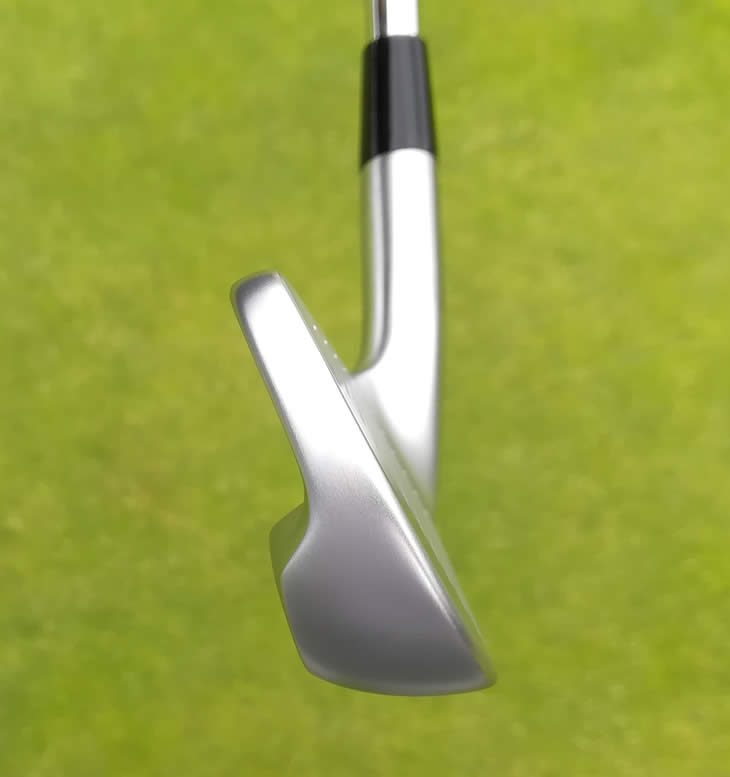
Yes. So we've tried to put a lot more camber in, the camber being basically the measurement from the bounce to the low point. By adding that extra camber it's actually more like a blade geometry on the sole, so from front to back with that added camber it should enter and exit the turf a lot quicker than it would if it was flat-soled.
It does, and when I was out testing I did notice that it was going through the grass a little differently, right now the ground is very firm so you can definitely notice the difference between the two models.
Absolutely yes. We're always trying to get the club to enter and exit the turf quickly, I think is the best way to describe it. We never want the club to drag and before when we had that wider sole we put the leading edge grind and trailing edge grind so that there was less mass down there to cause friction. But by adding more camber, we were able to get a similar effect with the sole that doesn't have those leading edge and trailing edge grinds.
So finally moving on to the Tour model, I know that there are lots of players who aren't contracted to use these clubs and you probably can't mention them, but obviously the last two US Opens have been won by someone using them! What changes have you made with the JPX919 Tour model, because the sole looks a bit wider in places but its noticeable that the top line is a bit thinner. Is this for redistribution, or is it a visual thing?
Well, launching the original 900 Tour to the market was something we were excited about but we didn't know how much traction it would get and we didn't know who was going to go to it.

But then we had so many of the Nike guys come right to it, just because they were free to play with whichever clubs they wanted, and with that we were able to get lots of feedback in terms of how we can improve not only the visual but also the performance benefits of it.
But the feedback that we kept hearing over and over again was that the 900's top line looked a little bit fatter, and a lot of that is because the Nike guys were getting their own clubs made and first thing they say is "take that top line down". So we took that top line down about 0.5mm so it's about 20% thinner than it was before. That's a big step down in thickness, and we redistributed a lot of that weight down low to help lower that sweet spot and produce a more penetrating ball flight.
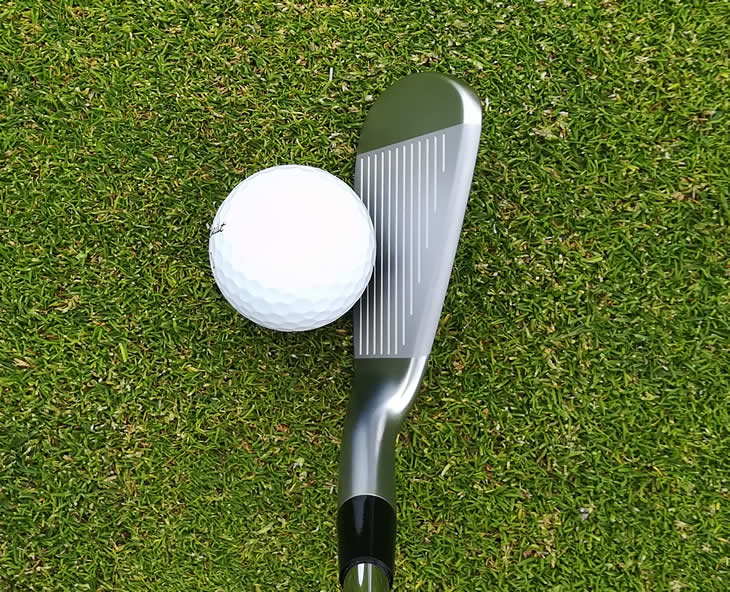
Typically what we've seen in the 900 and 919 Tour compared to the MP is we're going for a little bit more of an aggressive player, usually with a little higher swing speed guy as well. What we're trying to do is bring that sweet spot down to create that low spin, penetrating ball flight for players like Brooks Koepka who really go at it, and that's exactly what we did with this one.
So why would somebody like Koepka go for this JPX919 Tour model rather than something like the MP-18, because the top lines will look quite similar in a way won't they?
You're right, the top line looks very similar. but what you can get out of this club that you don't get out of an MP is a little bit lower spin and therefore a more penetrating ball flight, and you're also going to get a bit more forgiveness if you hit one towards the toe or heel it should maintain ball speed and maintain launch better than the MP.
Is that because of the way the muscle is shaped on the back, or because of the bigger head, or is it more to do with the material?
It's somewhat of a combination of both; compared to the blade, the head is a bit bigger and a bit longer from heel to toe, but it's by no means a large golf club. But the biggest thing is the shaping of the cavity and the stability frame, which gives you a redistributed weight for a higher moment of inertia with more mass out on the toe.
Do they notice the difference in feel between the tour and the MP? I think some of your loyalists might say that the MP's might feel a little better?
That was one of the other changes we made on this model, and one of the other bits of feedback we got in the original 900 Tour was that it felt a bit firmer than previous, so with this one we tweaked what we call our Harmonic Impact technology.
We tweaked the vibrations of this golf club so that it vibrates a little bit more like a muscle back, and on top of that we brought in our Grain Flow Forged High Density process where we focus a more of the grains from lower in the head more in the impact area so those two things should make this feel even softer.
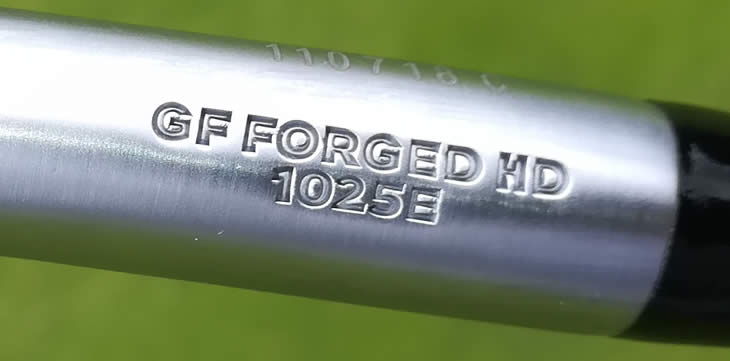
That's an interesting point and I've often wondered, is feel 'sound' or is it 'vibrations'?
They're pretty much the same thing, because sound is just audible vibration that you're hearing. So when we're developing a club we're able to simulate all the different modes in the audible range, from 2000 Hz up to 12000 Hz, and try to pick out which ranges will feel the best for the player.
The fourth mode of vibration is the one we always focus on and that's really where a blade is differentiated from a cavity back. Typically the fourth mode of a blade will be in the higher range, so with this model we wanted to get it into the higher range and make it closer to a blade feel, and that's something that we were able to do through the engineering of the golf club and also through the processes that we use.
From a cosmetic point of view you've taken a lot of color off the club, and even the word Mizuno, can you tell us the reason behind that?
You're actually the first person to point out that it doesn't even say Mizuno on it. One of the things we wanted to do with this line is make it more 'Mizuno' even though it doesn't say Mizuno on it, we wanted to make it as clean as possible.

With the previous 900 line there was a little bit of cosmetic with white and blue paint. We wanted this golf club to look so clean and pure that, even though it's a JPX, it could be played by any level of golfer.
The reason the Mizuno wording came off it is also partly because want to get our 'runbird' logo out there more and be well known. Of course everyone wants to have their own version of the swoosh, and we want to have something that people recognize. By having such a cool-looking club with just the runbird on it we thought it just made it that much cleaner and something that people want to look at and get intrigued by.
Certainly when I've been going between the models you have to look quite closely to see which one you're hitting, have you done that consciously so that is there an option for blending between these or are they really standalone sets?
They're designed to be blended. Between the Tour, the Forged and the Hot Metal each one is 2° apart. The reason for this is that if you want to blend a Tour with the Forged you can meet in the middle, and if you want to blend a Forged and a Hot Metal you can meet in the middle as well. If you need a more hotter, more long iron and a more controllable, workable short iron you can put those together.
Ultimately everybody wants a good-looking club in their bag, no one wants a big chunk of plastic back there. What Mizuno has always been known for is the beauty and the feel of our irons so we wanted to bring that even up to the highest handicappers. It doesn't matter if you're a high handicapper, because if you're playing a Mizuno you want to look like you're playing a Mizuno.
Does that blending extend to the lofts? Are different irons compatible between different sets?
Absolutely. The 6-iron of the Tour sits at 30°, the 6 iron of the Forged sits at 28°, and the 6 iron of the Hot Metal sits at 26°. So if you want to blend them you'd actually split the difference, so the lofts would be at 27° between a Hot Metal and a Forged and 29° between a Forged and a Tour. It allows you to really blend them all to basically create whatever lofts and whatever specs will dial in for you.
So there you're talking about your custom fitting process where you would adjust the loft in order to make it fit the blend?
That's exactly right and our PFS custom fitting software can guide you right through that process to make sure you're not going to have big gapping issues.
But that would presumably affect the bounce if you're bending club lofts?
Well, whenever you adjust the loft it will change the bounce, essentially by the same number of degrees you adjusted the loft. So the big thing with these is because you're only moving 1° and each one has an ample amount of camber, this sole bounce should not should not be affected too greatly.
That's great Chris, thank you very much indeed for taking us through the range. It was very informative and it was great to talk to you again
Absolutely and happy to do it any time.
Mizuno JPX919 Tour Irons Review
Mizuno JPX919 Forged Irons Review
Mizuno JPX919 Hot Metal Irons Review
More From Mizuno